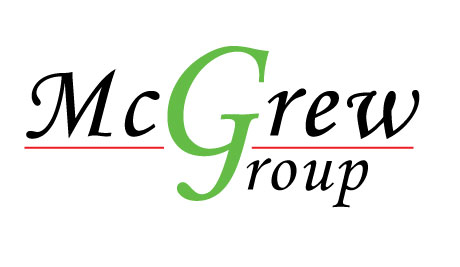Pat McGrew at the INKISH NON-EVENT 2019 · Copenhagen
INKISH hosted for the first time ever our NON-EVENT. The Non-event is celebrating the people that have been in front of the camera, or been supporting INKISH during the past years. This is a new recurring event, and the idea is to give space for the people we have featured to connect in a new way. We invited 150 people, and 32 decided to join us. Our guests came from Japan, Canada, USA, UK, Belgium, Sweden, and Denmark – and we are confident that next year, even more, will come.
We asked most of our participants to talk LIVE during the dinner – and here is Pat McGrew from the US. Pat McGrew may not need much of an introduction, but here we go. She is Director of Keypoint Intelligence, she owns and operates three restaurants, she hosts several podcasts, and of course, she is the host on Print Sample TV. Her energy level is WAY higher than most we know. Great to see her in Copenhagen!
Enjoy!
Pat McGrew.
Morton, what’s up?
We are here in Copenhagen at the Non-Event. When you came to my house yesterday. We agreed, I think it was the third time you visited my house.
Yeah. It’s good fun.
Yeah, it was. And we have now done Print Sample TV for, is a little bit more than a year or was it more?
I think it’s more than that. It’s more than that.
Is it two years?
Yeah. I think two.
Two years, time flies by.
It does.
Yeah, yesterday you and Yon did 21 new episodes.
We did.
What can we expect?
This round of Print Sample TV is really international because for the last six months I’ve been hitting, I think every trade show that you can imagine that involves print. So from August in Australia and then September in Brazil and then October in Chicago and then Japan and then Dallas and then Berlin.
You forgot Denmark.
And we had this, you are exactly right. We were in Denmark and then we were in Brussels. There was, yeah, we’ve been everywhere. So as part of the…
one of the things we did in 2019 was the first time we did Print Sample TV live.
We did live.
How was that for you?
And it was brilliant because it was a chance to take the best samples from a print show live and show people what they should be looking at while they’re at the print show. And also to give people who couldn’t come to the show a flavor of what they were missing. So all the international samples that we picked up, not from the non-life shows formed a lot of the basis of the 21 episodes that we did yesterday.
I just have to, I’m sorry to interrupt you. I just need just a little bit curious have you? You got any feedback from any of the vendors that we showed print samples from live? Regarding how this thing got fit or how is it valuable to them?
Do you know? The funny thing is I think that it is valuable to them and I think they’re still struggling to figure out how to work with it. For a lot of hardware vendors, they, their world is speeds and feeds and selling machines, right? They don’t really, most of them have really great workflow stories and that makes me sad. And, and even fewer of them have what I call a print sample strategy. So their solution…
Is that something comes in like last minute thing, when it’s?
Not even that, it’s last-minute, it’s that their concept of a print sample is a specific sample, usually one sheet of a stock photo that they bought from Getty that shows off their machine in the best possible light. So maybe their particular machine does blues really well. So then they go to the stock library and they find the…
There goes G seven and ISIS 12 print.
If you look at company print samples from the major hardware vendors, it’s not about G seven, it’s not about focus.
I was just kidding. When you say one is good for blue, one is good for red, right?
I know, but, but that’s what they do. And so what happens is when you go to a trade show and you see piles of print samples sitting side by side, and they’re these single sheets of Getty images you go, wow, this is really brilliant. Well yeah, because somebody took the Getty image, which was brilliant to start with or it wouldn’t have been on Getty. And then they bring it in and they color manage it just so specifically for that machine on that paper. Okay, well that might not be how you print.
Then can I ask you a question because one of the things I forgot to ask you, which was actually asked to one of the trade shows, I can’t remember which one, but there was a person that asked me, so what are the criteria? When you pick a sample and you, and you decide to put it on Print Sample TV, what are the criteria for you to evaluate whether you think it’s a great print sample?
Sellability.
Sellability. You can have an awkward print sample. But if it sells right, so this is not about beauty. Basically.
It is about the sellability for the purpose for which that piece was done.
When you spoke in the episode where we spoke about the RISO printer. You said it was, I think you said it was very good for textbooks. It was very good for specific.
And for transaction works. So RISO.
This is an example, I’m just trying to understand.
You are a government printer. If you’re a municipality, if you’re a university printer, if you’re a secondary school of your church where you’re, what you’re printing.
Is not being judged.
I’m not trying to endorse specific technologies and specific sentiments. I’m just trying to understand from what, so when you say salability, that means that when we, when you take, when you’ve, when you’ve grabbed a sample in the trade show, you talk to the vendor obviously to figure out what.
Sometimes.
What equipment has been used.
Hopefully, they have it on there, although many of them don’t.
Because I think that one of the things that we really want to push in 2020 from a Print Sample TV perspective is that we can try to tie the sample with the substrate or who is actually capable of printing it, right? That would be like awesome that you see something on TV and then you immediately can go to ink list and you can see who is capable of reproducing this kind of work.
I think there’s a lot of values of print printers, people who do print for a living, they struggle because for many of them they’ve been printing the same things for years. They have their stable of customers. Those customers order the same things, but, but things do change. Technology changes. The equipment that’s on their floor today was probably not the equipment that was on their floor 10 years ago, but their sales guys are still selling the same thing that they sold 10 years ago and their customers are essentially still buying the same thing that they bought 10 years ago, even though the equipment is capable of so much more.
It’s also a matter of trying to push the boundaries and showcasing what’s possible.
And think about it when we do Print Sample TV and in the current format, what we’re looking for are the things that will give an average printer new ideas on things that they can sell using the equipment that they already have. Now I may show a piece that was done on a KM-1 or I may show it that was done on in your desk or, or something that was done on a T series HP inkjet or a Ricoh inkjet, but in many ways that’s almost not relevant. What’s relevant is here is this idea that a designer and a buyer of design got together on and they created, the thing that is going to take their story forward. Might be a book, might be a magazine, might be a brochure, might be a box, right? Might be labels, might be door hangers.
I mean it could be anything. Excuse me. That’s what they realize, their vision. There we go. But they realize their vision into something that told a story. And it was compelling enough that as I was walking by as a casual observer of things that were around, I said, wait a minute, that’s cool. That’s something that other printers should know about.
It’s about sharing the experience.
It is. And if you, so there are two purposes to Print Sample TV. One is to get printers to think outside of what they’re producing right now, but the other is to make the vendors think. If I’m selling hardware and I’m selling the same old way to the same group of people. I’m just upgrading equipment with the same group of people I’ve already, okay, maybe I went away from another vendor every once in a while. But I don’t have it as part of my responsibility to help that printer that I’ve sold this equipment to make money with that equipment. I’m not going to create a loyal bonded relationship. So what I’m hoping is that with Print Sample TV, the vendors, as we look at identifying for every print piece, what’s the paper or the substrate, what’s the corrugate, what’s the foam and cartons and substrate.
What’s the marking device? Whatever it is, whether it’s an EFI 16 H wide format printer, or it’s a Ricoh VC Seventy Thousand or it’s a KM-1 or it’s a Tia Serra task force, whatever it is. And then what happened after the marks got on at the sub-screen. How did it get finished? How did we turn it into something that then became usable by the person who ordered that print? What were the steps? What were the machines?
More into the final application as well, basically.
Yeah. And then think about one of the Print Sample TV episodes we did in the last round. The unpacking was fun and I, hi Sameta you need to send me another box.
Semeta we were expecting.
We need another box. I’m the one with the menus from one of my restaurants, right. So that is a…
That’s the one where we expect to get steaks with a discount.
Oh, of course you do. And so, and you know you’re invited. The thing that you look at, this is a non-pulp based paper. It’s stone based paper. And we use it at the restaurant because.
You can put it in the dishwasher.
It’s almost indestructible. You can just about running through the dishwasher. And we love it. And the reason that I wanted to tell that story, even though it was our menu, was because if I’m a printer and I’m serving the restaurant trade, why would I not want to go find out about that paper? Right? And so that.
That takes the value proposition. That takes away the competition base that.
You can do it.
I know that you can talk forever.
Yeah, I know, but I can’t because we got other people.
Love you.
We’ll do this again.
Love you.
What? This time next year?
Yes. Are you going?
Oh yeah.
Oh yeah.
This time next year.
Great having you.







































































